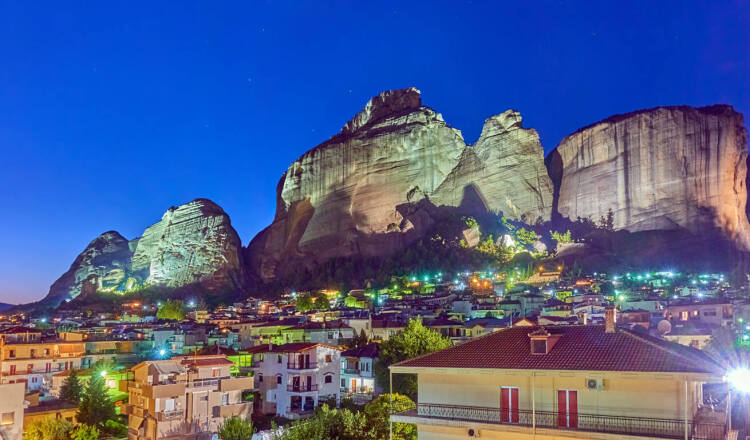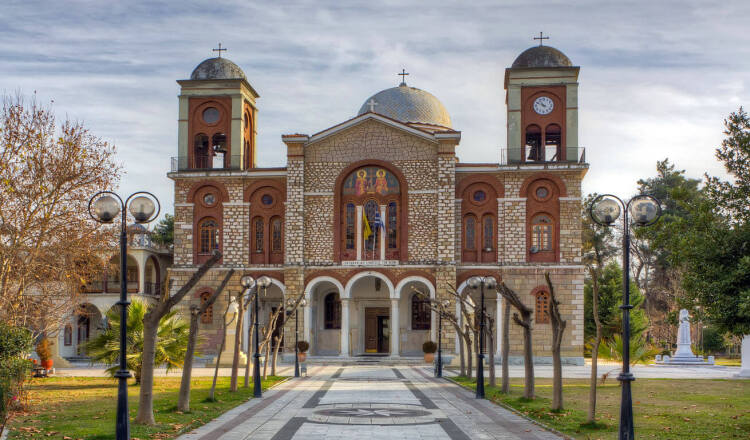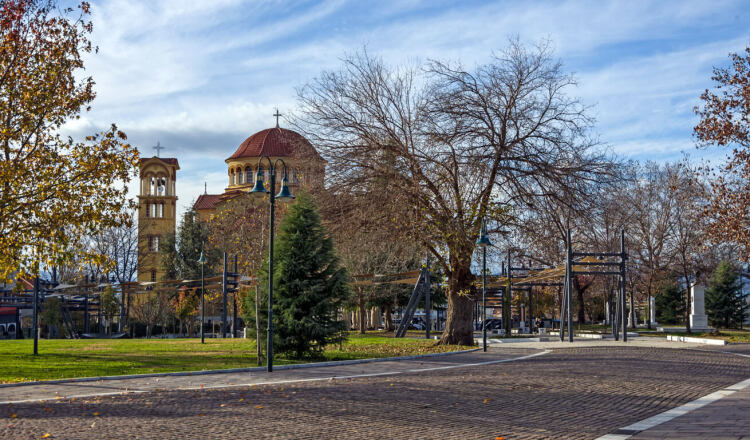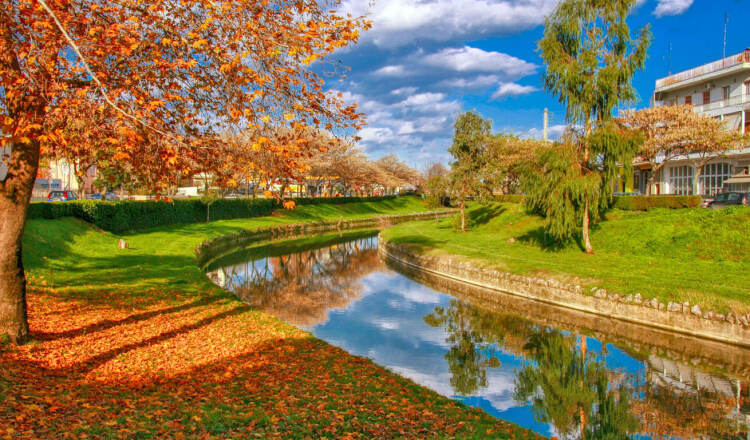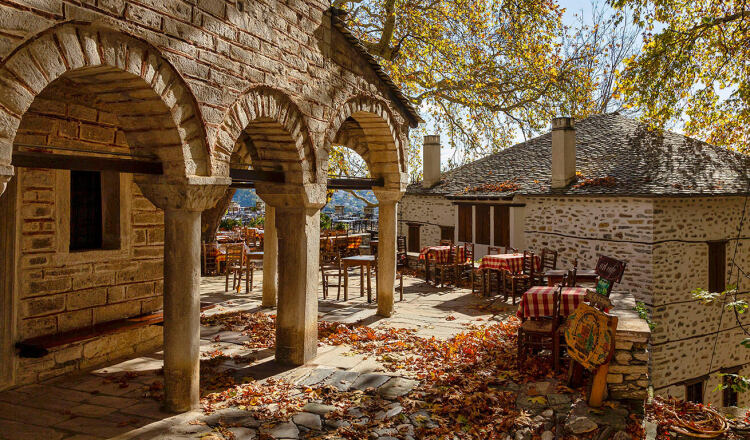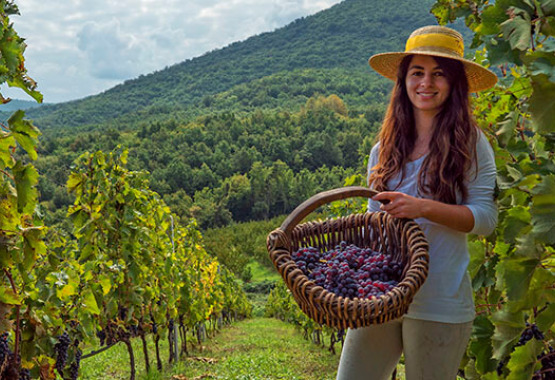
Castles
Visiting Greece is an experience where myth and tradition, history and culture play a leading role.

Enjoy Thessaly, a region of sheer beauty with mountains, rivers, beaches, the popular Plastira Lake, Tempi valley, and last but not least the unique Meteora, the most photogenic spiritual site in Greece. Archeological areas, Byzantine monasteries and churches, traditional settlements and ski resorts complete the fascinating natural beauty of Thessaly and make it a popular holiday destination. Soaring like a sleepless guardian above the city of Volos, Mt Pelion is gorgeous throughout the year. Set against an idyllic backdrop of olive groves that shimmer in the sunlight, dense forests and lush fruit orchards, these 24 stone-built villages are the true gems of Pelion.
Take the legendary “Mountzouris”, the traditional train of Pelion that connects Milies with Ano Lechona. It’s the perfect way to see part of the mountain and some other traditional villages. Visit Volos, the city of the Argonauts, where you will definitely pass by a tsipouro taverna as they are dispersed in every nook and cranny: almost 600 (!) of them bear the gastronomic stamp of the city and provide people with a favourite meeting point; that is the unrivalled landmark of Volos. Just a few kilometers to the West, lie the archaeological sites of Sesklo (the most ancient settlement of Europe, dating back to 6.000 BC) and Dimini, the most important prehistoric settlement in Greece and one of the most important ones of the New Stone Age worldwide.
Kalabaka is built on the feet of the Meteora and it is at the left side of the river Pinios at the point that it enters the plain of Thessaly.
Internationally known due to the famous Monasteries on the top of the Meteora rocks, suspended in the air.
Meteora are one of the greatest monuments of the world, protected by UNESCO, and the most important monastic center in Greece (after Agio Oros). The first ascetics came here in the 11th century. Meteora, however, flourished as a monastic center between the 13th and 14th century as many people who lived in the nearby areas embraced the monastic way of living. The ancient name of Kalabaka was Aiginion, while at the beginning of the 10th c., today's ttown is mentioned as Stagi, a name that is preserved until today as a Metropolitan title.
Kalabaka is a destination rich in history with many important monuments to visit. It is the starting point for those who wish to be familiar with the monuments and the magnificent sites of Aspropotamos, Koziakas and of course the monasteries of Meteora. The town has nice hotels, modern campings, restaurants, tavernas and shops.
It is built close to tributary of Peneus River, in an area perfect for commercial contact between the plain and mountain area (31.000 inhabitants). This is one of the reasons why it is the rural center of Thessaly products (cotton, wheat and products of cattle raising) collection and distribution.
With its two big squares, the huge park and beautiful pedestrian precincts, Karditsa gives to its visitors the opportunity to go around the city by bicycle (it has a wide network of bicycle streets) and enjoy its beauty. In 1821, the plague epidemic decimated the city population. Its revival began after the liberation from Turks in 1881. Karditsa was the first free city in Europe after the withdrawal of Italian army on March 1943 during the Second World War. Its final liberation from German army took place in September 1944.
In the region of Thessaly, a capital city lies surrounded by lush valleys, and some of the most imposing mountains in Greece. Larissa, with a population of approximately 130,000 residents, is a city where ancient history and long tradition in agriculture meet the modern way of living.
To the north and east, Kamvounia mountains, Titaros, Olympus (with the highest mountain peak in Greece reaching 2,917m.), Ossa (or Kissavos) and Mavrovouni form a natural enclave. Here the micro-climatic conditions create an ideal wild life habitat. The soil of the area is also exceptionally fertile: cotton, grains, watermelon, melon, tobacco, vegetables, wine and tsipouro are only some of this land’s agricultural products. Larissa is also the centre of the economic activity in Thessaly with an ongoing development in industry, as well as the service sector.
The Prefecture's capital is a beautiful city built on the location of ancient Trikki (according to mythology the nymph Trikki was the daughter of Pinios). Asklipios, the most important doctor of antiquity, originated from here. The Lithaios River flows through the city which is distinguished by historical Monuments, excellent urban planning, spacious squares, parks and pedestrian streets.
Volos is one of the largest and most beautiful Greek cities, located at the centre of the country, with a port that is among the busiest in Greece. Built at the innermost point of the Pagasetic Gulf, it lies at the foot of Mt. Pelion, where the fresh and salty sea breeze is mixed with the scented mountain air of the homeland of the mythical Centaurs. The city was the starting point of the ancient famed expedition of Jason and the Argonauts, which is one of the best-known chapters of Greek Mythology.
The region’s wealth and its long history can be seen in its architectural structure which has an air of elegance and beauty. The grand residences and state buildings, the museums, the early 20th century industrial facilities, and the historic churches are some of the city highlights.
Beautiful green Mt. Pelion is a popular destination in the region of Magnesia. The soft slopes and easily accessed peaks make this mountain the ideal escape for hiking lovers and holidaymakers. There are two shelters, one at Agriolefkes location and the other at Agios Georgios near Zagora. In Agriolefkes, close to Chania Village, there is a skiing centre for winter sports lovers. Mountain biking and horse-riding fans can explore Mt Pelion along the available trails and routes. Take a tour of the local villages, any time of the year, for a truly memorable experience!
Visiting Greece is an experience where myth and tradition, history and culture play a leading role.
Like stunning mirrors of outstanding natural beauty, lakes in Greece reflect the splendour of the Greek landscape in their waters.



